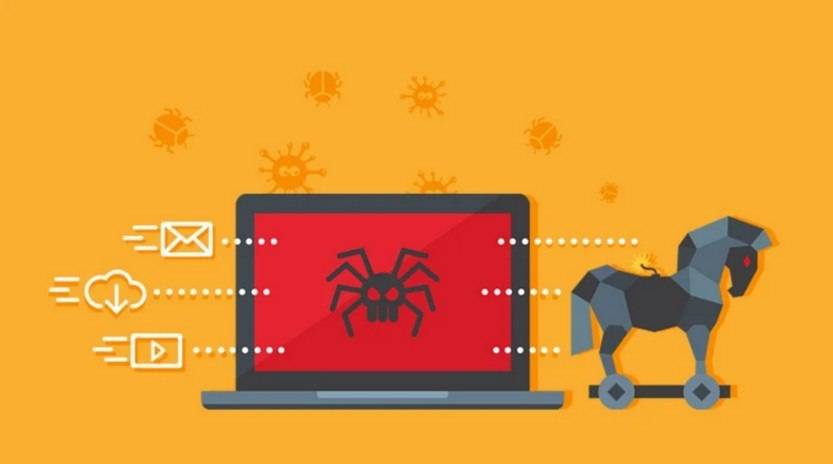Scams have been a persistent issue in the digital age, with cybercriminals constantly devising new methods to exploit unsuspecting individuals. One such scam that has gained significant attention in recent years is the ‘Security Notice’ sextortion scam email. This article aims to provide a comprehensive overview of this scam, including what it is, how it works, what to do if you have fallen victim, technical details, and relevant statistics.

What is the ‘Security Notice’ Sextortion Scam Email?
The ‘Security Notice’ sextortion scam email is a type of phishing scam that preys on individuals’ fears and vulnerabilities. The scam typically involves an email sent to the victim, claiming that the sender has compromising information or explicit content of the recipient. The email threatens to expose this information unless a ransom is paid in the form of cryptocurrency, usually Bitcoin.
The scammers often use social engineering techniques to make the email appear more convincing. They may include personal details about the recipient, such as their name, address, or phone number, to create a sense of legitimacy. Additionally, the email may contain a password that the recipient has used in the past, further adding to the illusion that the sender has access to their personal information.
How Does the Scam Work?
The ‘Security Notice’ sextortion scam email follows a well-defined process to manipulate and deceive its victims. Understanding the steps involved can help individuals recognize and avoid falling victim to this scam:
- The initial contact: The scam begins with the victim receiving an email that appears urgent and alarming. The subject line often includes phrases like “Security Notice” or “Important Information.”
- Threats and intimidation: The email typically contains threats of exposing explicit content or personal information unless a ransom is paid. The scammers may claim to have obtained this information through hacking or surveillance.
- Demand for payment: The email instructs the victim to make a payment in cryptocurrency, usually Bitcoin, to a specified wallet address. The scammers often set a deadline to create a sense of urgency.
- Manipulation tactics: To further intimidate the victim, the scammers may include personal details or a password that the victim has used in the past. This is done to make the email appear more legitimate and increase the chances of the victim complying with the demands.
- Follow-up emails: If the victim does not respond or refuses to pay, the scammers may send follow-up emails with increased threats or attempts to negotiate a lower ransom.
What to Do If You Have Fallen Victim?
Discovering that you have fallen victim to the ‘Security Notice’ sextortion scam email can be distressing. However, it is important to remain calm and take immediate action to mitigate the potential damage:
- Do not panic: It is crucial to remember that the scammers’ threats are often empty and their claims of having compromising information are usually false.
- Do not engage with the scammers: Avoid responding to the email or attempting to negotiate with the scammers. Engaging with them only encourages further harassment.
- Report the incident: Forward the scam email to your email provider’s abuse department. This helps them identify and block similar scam emails in the future.
- Change passwords: If the scam email includes a password that you have used in the past, change it immediately. Additionally, consider using a password manager to generate and store unique passwords for each online account.
- Scan for malware: Run a scan with a reputable antivirus software, such as Malwarebytes Free, to ensure that your device is not infected with any malware or keyloggers that could compromise your security.
- Inform authorities: If you have suffered financial loss or believe your personal information has been compromised, report the incident to your local law enforcement agency.
Technical Details of the Scam
The ‘Security Notice’ sextortion scam email relies on several technical tactics to make the scam appear more convincing:
- Email spoofing: Scammers often spoof the sender’s email address to make it appear as if the email is coming from a legitimate source. This can make it difficult for recipients to identify the scam.
- Data breaches: The scammers may obtain personal information, including email addresses and passwords, from previous data breaches. They then use this information to add credibility to their threats.
- Bitcoin transactions: The scammers typically demand payment in Bitcoin due to its pseudonymous nature, making it difficult to trace the transactions back to the perpetrators.
Statistics on Sextortion Scams
Sextortion scams, including the ‘Security Notice’ scam, have become increasingly prevalent in recent years. Here are some statistics that highlight the scale of this issue:
- In 2020, the FBI’s Internet Crime Complaint Center (IC3) received over 13,000 complaints related to sextortion, with reported losses exceeding $8.9 million.
- A study conducted by the University of Portsmouth found that sextortion scams accounted for 10% of all reported cybercrimes in the United Kingdom.
- According to the Anti-Phishing Working Group (APWG), there was a 1,200% increase in sextortion scams between 2018 and 2019.
Summary
The ‘Security Notice’ sextortion scam email is a malicious scheme that preys on individuals’ fears and vulnerabilities. By understanding how this scam works and taking appropriate precautions, individuals can protect themselves from falling victim to such scams. Remember to remain vigilant, report any suspicious emails, change passwords regularly, and use reputable antivirus software like Malwarebytes Free to ensure your online safety.










